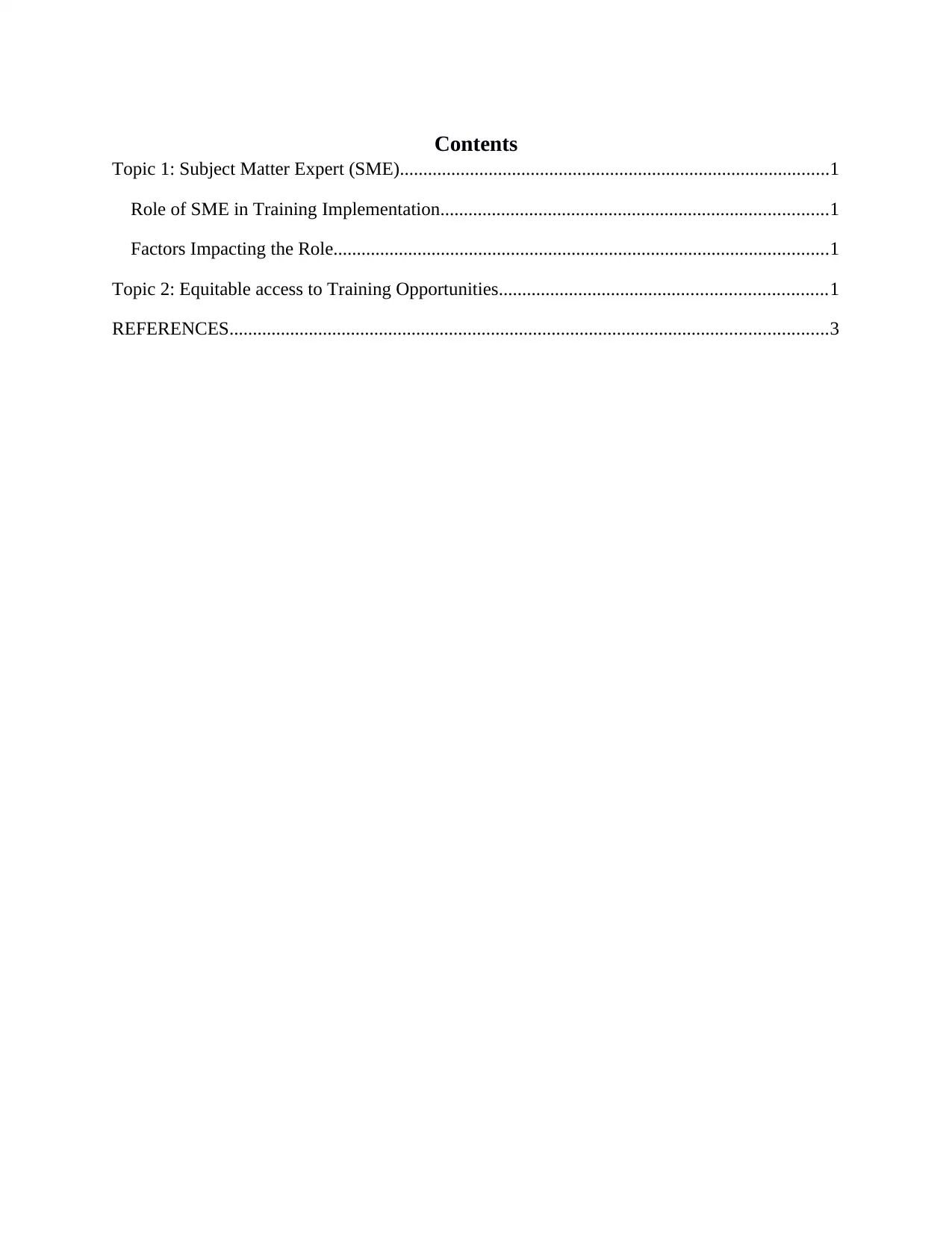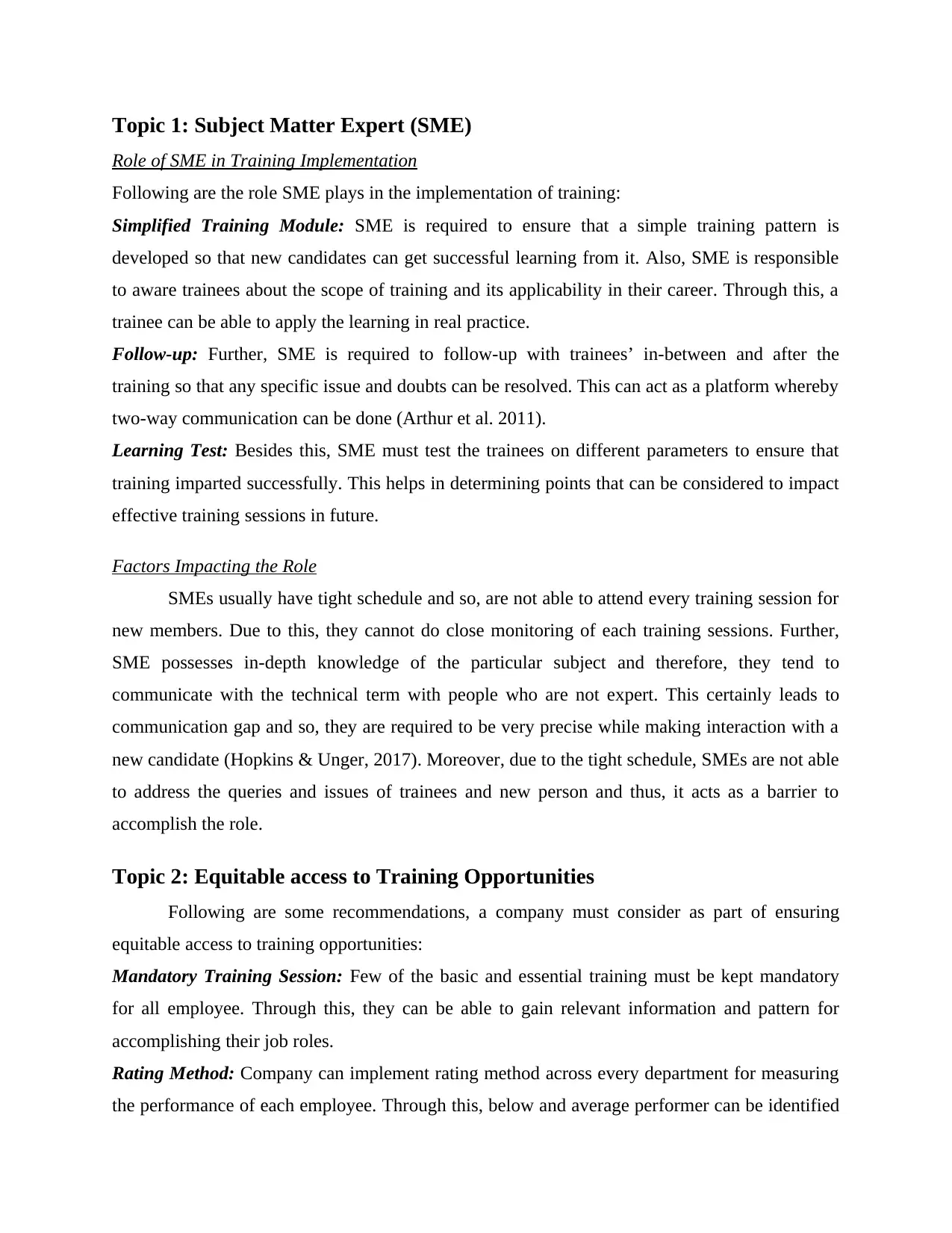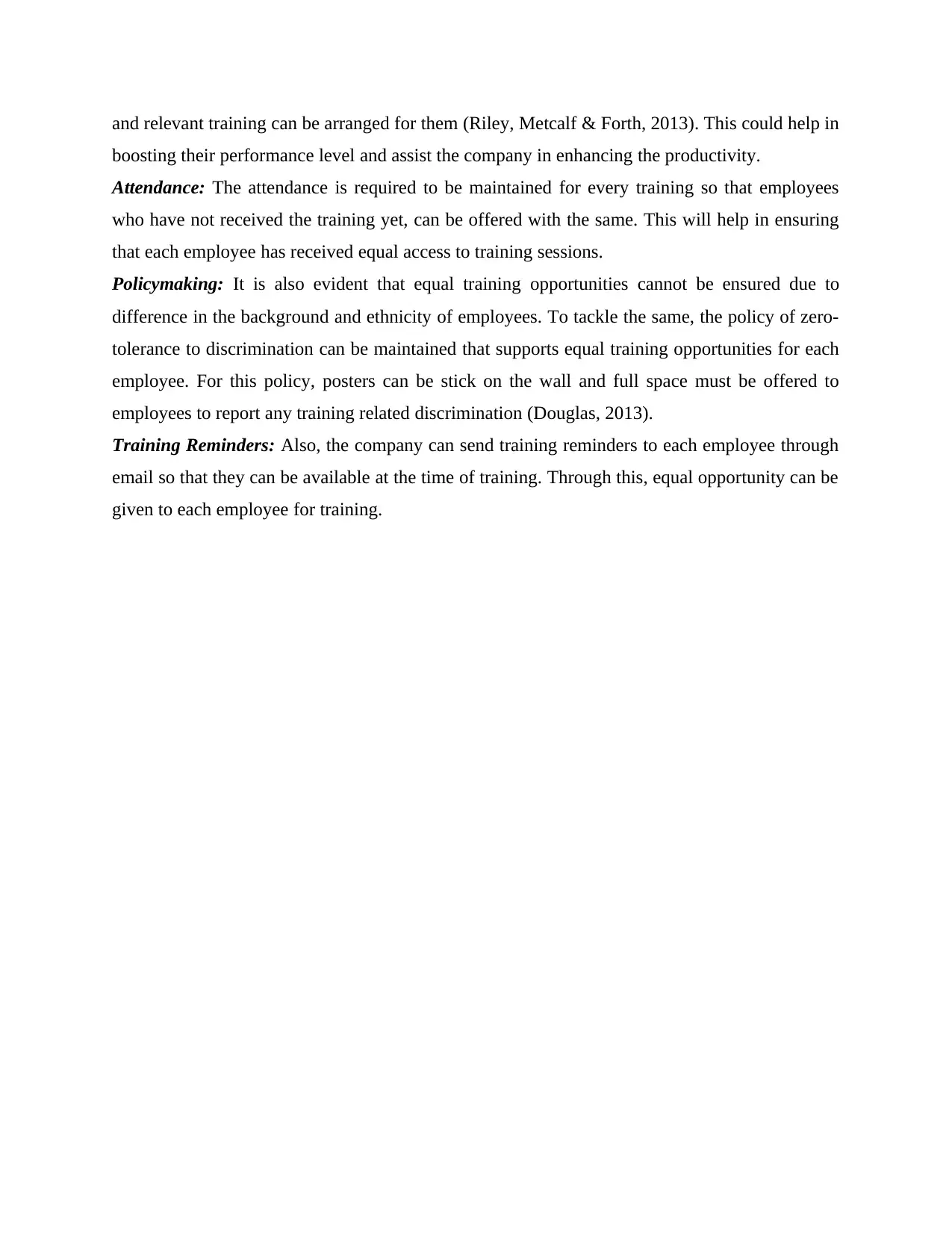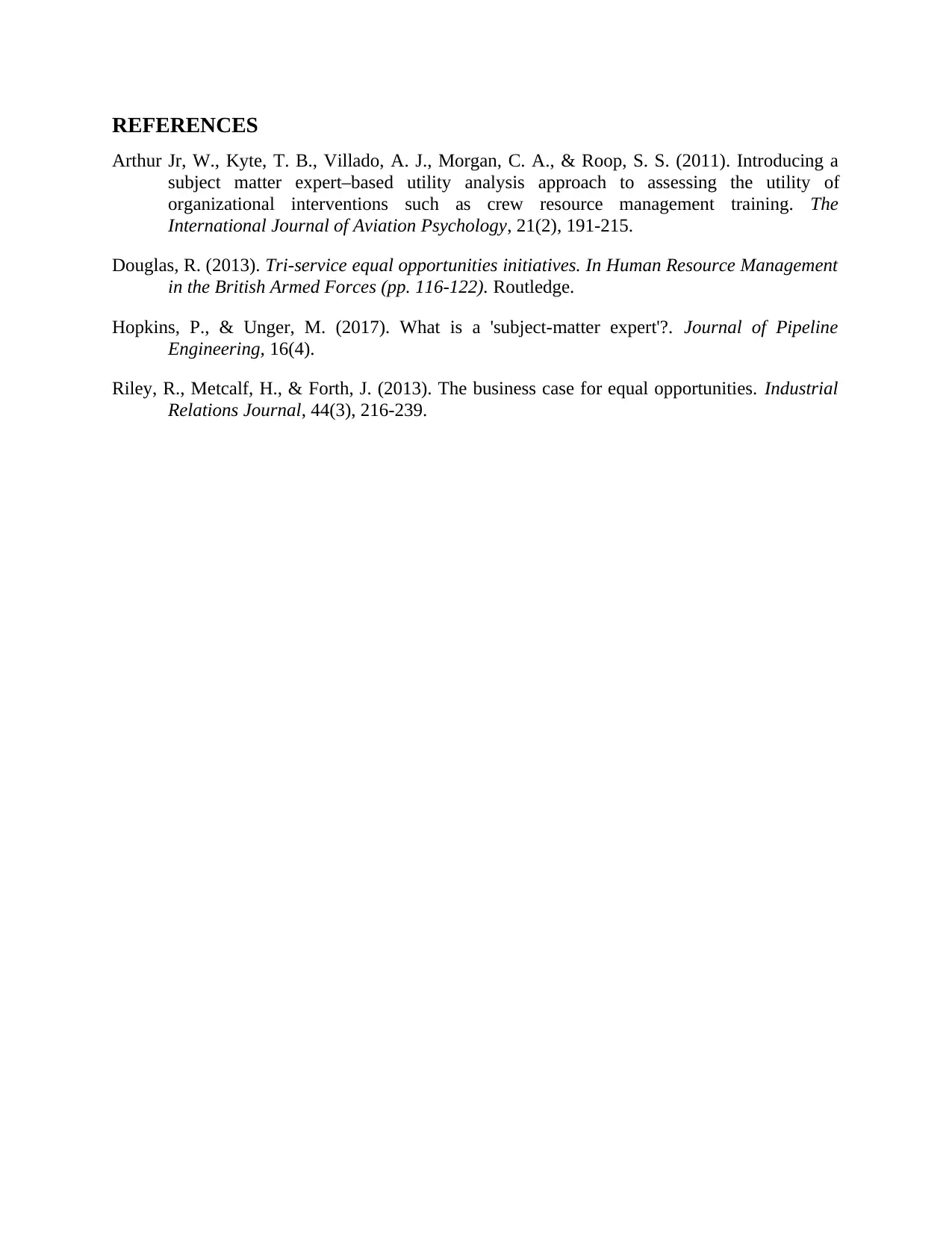Human Resource Management: SME Role and Training Access
VerifiedAdded on 2022/10/17
|5
|803
|12
Report
AI Summary
This report delves into the crucial role of Subject Matter Experts (SMEs) in the implementation of training programs within Human Resource Management (HRM). It outlines the responsibilities of an SME, including simplifying training modules, providing follow-up support, and conducting learning tests to ensure effective knowledge transfer. The report also identifies factors that can impact the SME's effectiveness, such as time constraints and communication challenges. Furthermore, it provides recommendations for organizations to ensure equitable access to training opportunities for all employees. These recommendations include mandatory training sessions, performance-based rating methods, maintaining attendance records, establishing zero-tolerance discrimination policies, and sending training reminders. The report concludes by emphasizing the importance of these measures in fostering a fair and productive work environment.
1 out of 5












![[object Object]](/_next/static/media/star-bottom.7253800d.svg)